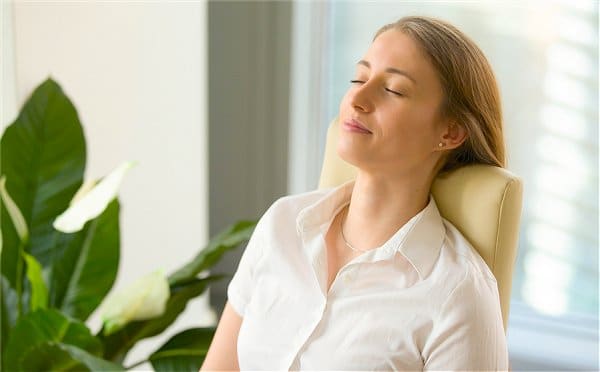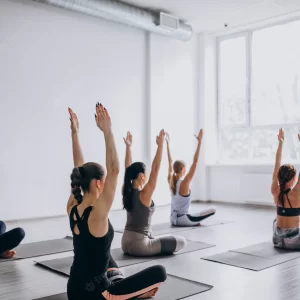RELAXATION
Relaxation is a state of low tension in the mind and body. People frequently use specific procedures, called relaxation techniques, to become more relaxed.
Cravings can make people feel agitated, anxious or edgy. Having relaxation techniques to use in these situations can help you relax, manage cravings and stay on track.


WHAT IS RELAXATION?
Tension is a state of physical stiffness in the body that can cause pain and even emotional reactions such as anxiety. Physical relaxation aims to undo this tension and progressively relax muscles and muscle groups. Psychological relaxation occurs when the mind is relatively free of stress and distraction. People may still have stress in their lives or tasks to complete when they are psychologically relaxed, but stress and tension are not foremost in the minds of relaxed people. Psychological relaxation can affect physical relaxation, and people under stress frequently experience physical aches and pains as well as muscle
Some people have more trouble with relaxation than others. People who tend toward anxiety may experience fewer states of relaxation than others. Depression, anxiety, external stress such as unemployment, diet, and drug use can all affect a person’s state of relaxation. tension.
Relaxation exercises allow you to create a state of deep rest, which is very healing to the entire body and can contribute to self-care.The above quote highlights the diversity of activities that individuals may find relaxing. It is important to find ways to incorporate relaxing activities into your weekly routine as a means of preventing burnout.
7 Types Of Relaxation Techniques That Help You
Fight Stress!

1.Practice Deep Breathing
Are you distracted? Try deep breathing. A simple yet powerful relaxation technique, deep breathing involves taking slow, long, deep breaths and as you do so, you focus on disengaging your mind from distracting sensations and thoughts. This type of breathing exercise is particularly helpful for people with eating disorders and sleep disorders, as it helps them to focus on their bodies more positively. Deep breathing exercises may help activate the parasympathetic nervous system, which controls your body’s relaxation response. There are many types of deep breathing exercises, like abdominal breathing, diaphragmatic breathing and paced respiration. These exercises can be combined with other de-stress activities, like music and aromatherapy. The best part – it is easy to learn and can be practiced anywhere.

2. Progressive Muscle Relaxation
Are you distracted? Try deep breathing. A simple yet powerful relaxation technique, deep breathing involves taking slow, long, deep breaths and as you do so, you focus on disengaging your mind from distracting sensations and thoughts. This type of breathing exercise is particularly helpful for people with eating disorders and sleep disorders, as it helps them to focus on their bodies more positively. Deep breathing exercises may help activate the parasympathetic nervous system, which controls your body’s relaxation response. There are many types of deep breathing exercises, like abdominal breathing, diaphragmatic breathing and paced respiration. These exercises can be combined with other de-stress activities, like music and aromatherapy. The best part – it is easy to learn and can be practiced anywhere..

3.Body Scan Meditation
Do you often ignore the signs your body exhibits due to stress without realizing the seriousness of the situation? This could lead to serious health issues shortly. Body scan meditation is a great way to release tension that you might not even realize your body is experiencing. The technique involves paying attention to different body parts and bodily sensations in a gradual sequence starting from the toe and then moving up to the head. practiced anywhere..

4. Guided Imagery
Did you know your stress levels could go down just by drawing a scenic picture in your head? Well, that’s exactly what ‘guided imagery’ does to you. For this particular relaxation technique, you imagine scenic locations and pictures in your mind to help you focus and relax. You will find plenty of recordings of soothing scenes online on free apps – all you need to do is choose the image you find calming, one that has a personal significance..

5.Mindfulness Meditation
This type of relaxation technique involves sitting in a comfortable position, focusing on your breathing and directing the mind to the present moment without drifting its attention to the past or future. Mindfulness meditation can work wonders for people trying to cope with depression, anxiety or chronic pain.

6. Exercise
Did you know people who exercise daily are less likely to experience stress and anxiety than those who don’t? This is because any sort of physical exercise reduces the level of the stress hormone, cortisol, in your body. It releases chemicals, known as endorphins, which enhance mood and act as a natural pain reliever. Moreover, exercising helps to improve the quality of sleep that is often affected negatively due to anxiety and stress. Pick an exercise routine or activity that appeals to you. Dancing, cycling, jogging and walking are some of the best de-stress activities to choose from.
7. Yoga
Yoga is a body-mind practice, which combines controlled breathing, physical poses and relaxation or meditation. It brings about mental and physical disciplines that can help you achieve peacefulness of mind and body. This, in turn, helps you relax and manage stress and anxiety.

Breathing relaxation
- Sit (or lie) down and close your eyes, or let your eyes gently rest on an object in the room.
- Inhale deeply and slowly, while counting to four.
- Exhale slowly, counting to four.
- Inhale deeply and slowly again as you count to four, then hold your breath for two seconds.
- Exhale slowly, counting to four.
- Repeat inhale and exhale cycle for several minutes, and consciously relax.
- As you inhale, imagine yourself in a safe, comfortable, beautiful place. Continue to breathe as you hold the image in your mind. Feel how relaxed you are.
- When you are ready, become aware of yourself in the room once again, wriggle your fingers and toes, and slowly open your eyes.
Progressive muscle relaxation
- Rest your arms by your side, and close your eyes.
- Inhale as you count to 4, and exhale as you count to 4, until your mind is quiet and you feel calm.
- As you continue to breathe slowly, tense each muscle group for 10 seconds (don’t tense so much that you feel cramp or pain), then relax for 10 seconds, starting with your:
- Feet: curl your toes, then relax.
- Calves: tighten your calf muscles, then relax.
- Thighs: tighten your thigh muscles, then relax.
- Buttocks: tighten your buttocks, then relax.
- Stomach: pull your tummy in, then relax.
- Chest: breathe in deeply, then breathe out and relax.
- Hands: clench your hands into fists, then relax.
- Lower arms: bend your hands up at the wrists, then relax.
- Upper arms: bend your arms up at the elbow, then relax.
- Shoulders: lift your shoulders up, then relax.
- Neck: roll your neck gently to the left, then the right, then forward, and relax.
- Jaw: clench your teeth, then relax.
- Forehead and scalp: close your eyes tightly, then relax.
- Eyes: raise your eyebrows, then relax.
- Continue slow, controlled breathing for five more minutes, and enjoy the feeling of relaxation.
- When you’re ready, have a good stretch and bring your awareness back into the room.





